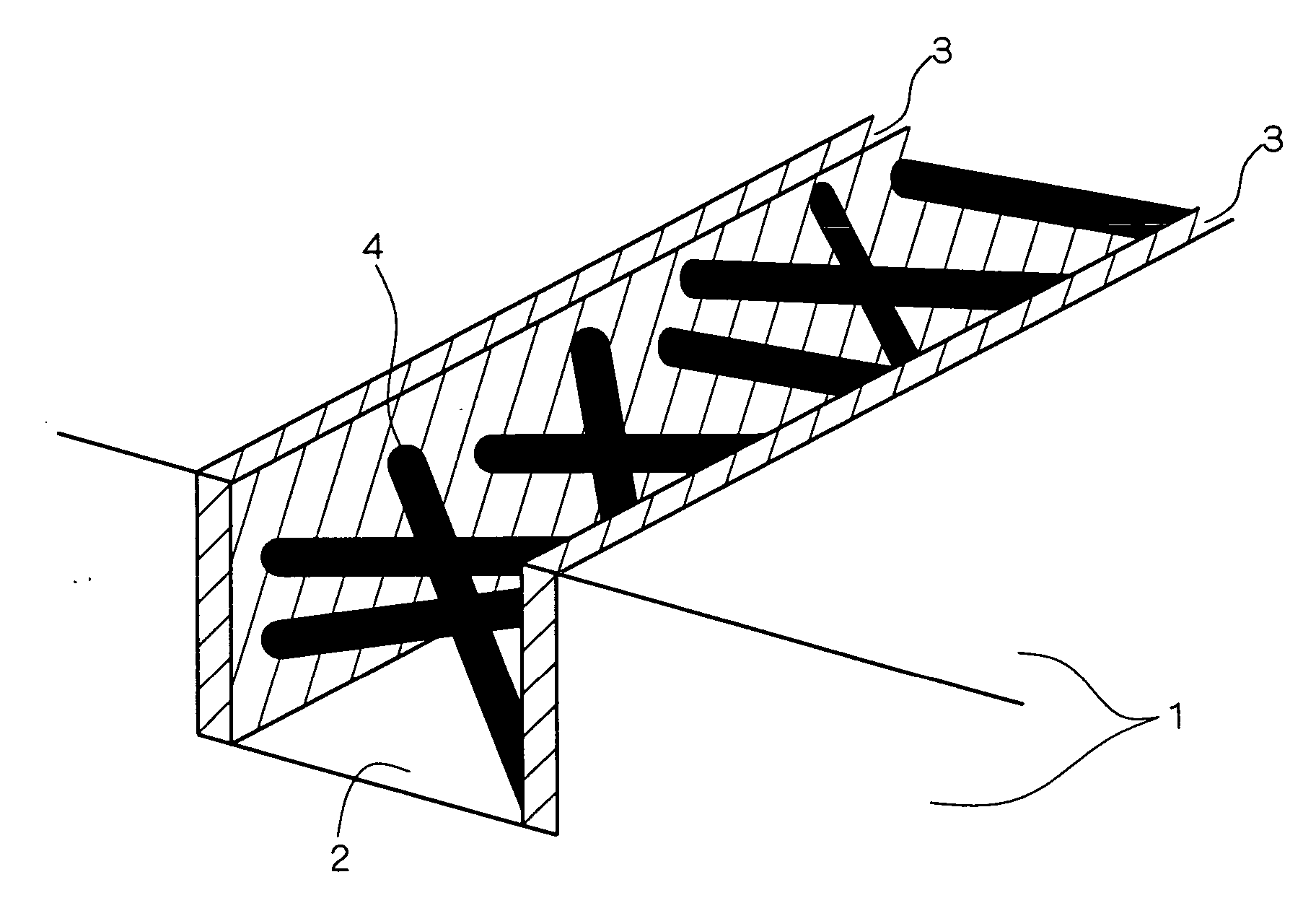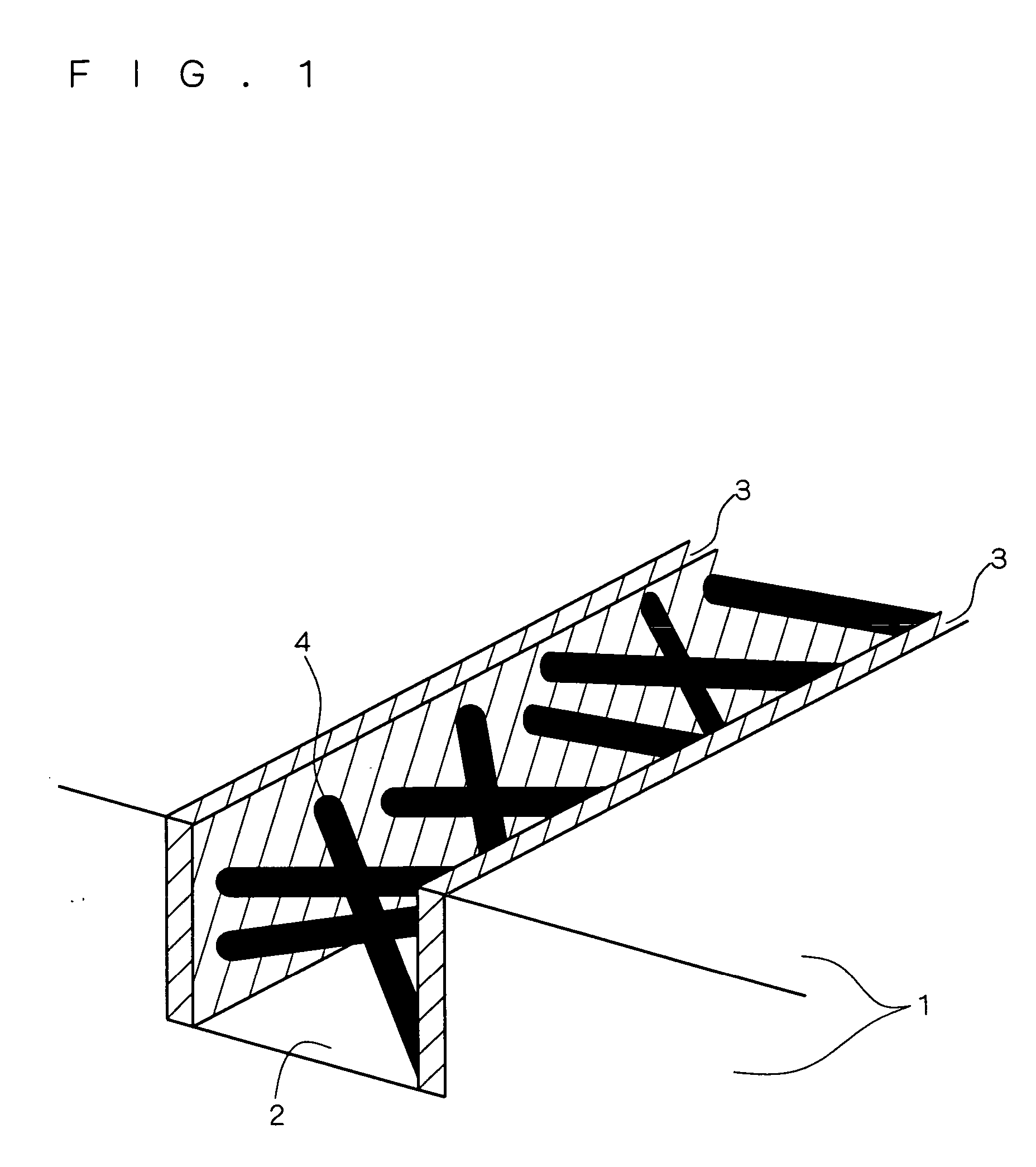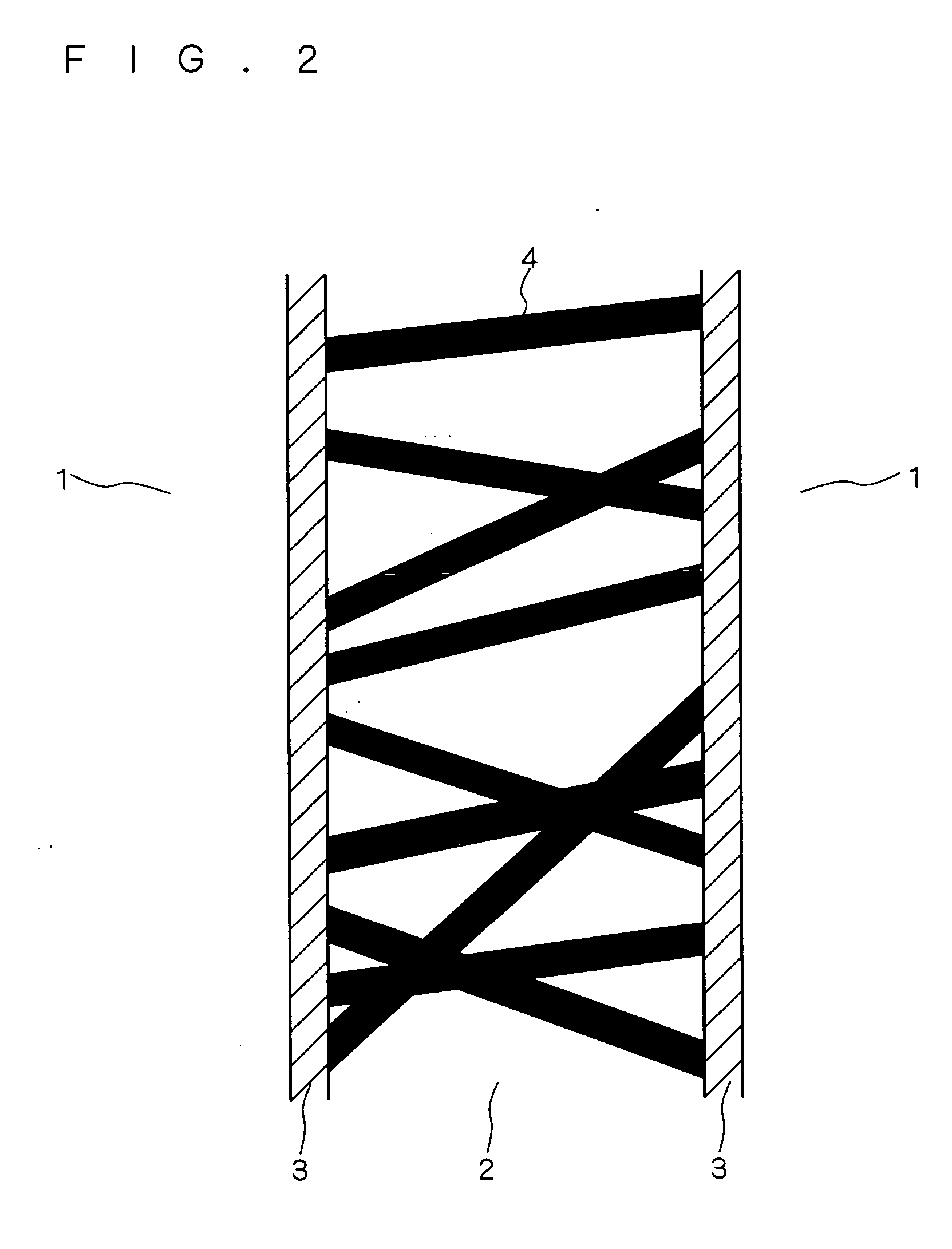Wire structure, semiconductor device, MRAM, and manufacturing method of semiconductor device
a manufacturing method and wire structure technology, applied in the field of wire structure, semiconductor devices, mrams, and manufacturing methods of semiconductor devices, can solve the problems that the value of the current that is allowed to flow through these downsized copper wires cannot help being made smaller, and achieve the effect of suppressing fusion cutting of wires, reducing the resistance of the entire wire, and increasing the current density of curren
- Summary
- Abstract
- Description
- Claims
- Application Information
AI Technical Summary
Benefits of technology
Problems solved by technology
Method used
Image
Examples
first embodiment
[0064]FIG. 1 is an enlarged perspective view showing a wire structure according to a first embodiment. In addition, FIG. 2 is a top view showing the wire structure according to this embodiment. In addition, FIG. 3 is a perspective cross-sectional view showing the wire structure according to this embodiment.
[0065] Here, FIGS. 1, 2 and 3 depict only several carbon nanotubes 4, for the purpose of simplifying the drawings. Actually, however, the carbon nanotubes 4 exist in a trench 2 more densely than in the figures. In addition, the directions in which the carbon nanotubes 4 grow are more complex actually, and carbon nanotubes grow in random directions.
[0066] As shown in FIGS. 1 to 3, an interlayer insulating film 1 is formed on a semiconductor substrate 10. A trench 2 of which the cross section is approximately rectangular is formed in the surface of the interlayer insulating film 1. In addition, conductive catalyst films 3 are formed on the surface on both sides of the trench 2.
[0...
second embodiment
[0088]FIG. 8 is a perspective cross-sectional view showing a wire structure according to a second embodiment.
[0089] As shown in FIG. 8, in the wire structure according to this embodiment, the inside of a trench 2 in which carbon nanotubes 4 are formed is filled in with a conductor (for example, copper) 6. Furthermore, a barrier film 5 is formed in order to prevent the diffusion of this conductor 6 into an interlayer insulating film 1.
[0090] This barrier film 5 is formed on the inner surfaces of the sides and the bottom of the trench 2. Here, the barrier film 5 is formed between the interlayer insulating film 1 and the conductor 6 on the bottom and between catalyst films 3 and the interlayer insulating film 1 on the sides of the trench 2. This is because the carbon nanotubes 4 are not prevented from growing on the catalyst films 3.
[0091] The other configurations are the same as those of the wire structure according to the first embodiment.
[0092] Next, a manufacturing method of th...
third embodiment
[0112]FIG. 14 is a perspective cross-sectional view showing a wire structure according to a third embodiment.
[0113] As shown in FIG. 14, a catalyst film 3 having conductivity is also formed on the bottom of the trench 2 in the wire structure according to this embodiment. Accordingly, as shown in FIG. 14, carbon nanotubes 4 also grow on the catalyst film 3 that exists on the bottom of the trench 2.
[0114] The other configurations are the same as those in the wire structure according to the first embodiment.
[0115] Next, a manufacturing method of the wire structure according to this embodiment is concretely described with reference to the cross-sectional views showing the steps thereof.
[0116] First, a structure as shown in FIG. 6 is prepared.
[0117] Next, as shown in FIG. 15, a resist 11 is applied to the catalyst film 3 so as to fill in the trench 2.
[0118] Next, etch back is carried out on the resist 11. As a result of this, as shown in FIG. 16, resist 11 remains only on the botto...
PUM
 Login to View More
Login to View More Abstract
Description
Claims
Application Information
 Login to View More
Login to View More - R&D
- Intellectual Property
- Life Sciences
- Materials
- Tech Scout
- Unparalleled Data Quality
- Higher Quality Content
- 60% Fewer Hallucinations
Browse by: Latest US Patents, China's latest patents, Technical Efficacy Thesaurus, Application Domain, Technology Topic, Popular Technical Reports.
© 2025 PatSnap. All rights reserved.Legal|Privacy policy|Modern Slavery Act Transparency Statement|Sitemap|About US| Contact US: help@patsnap.com



